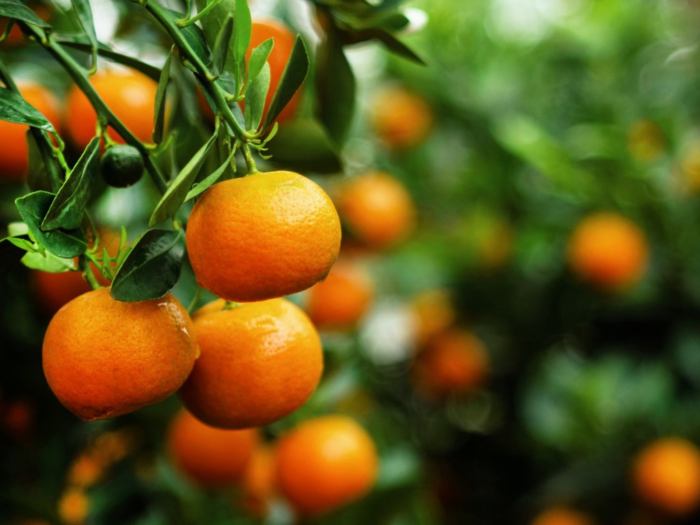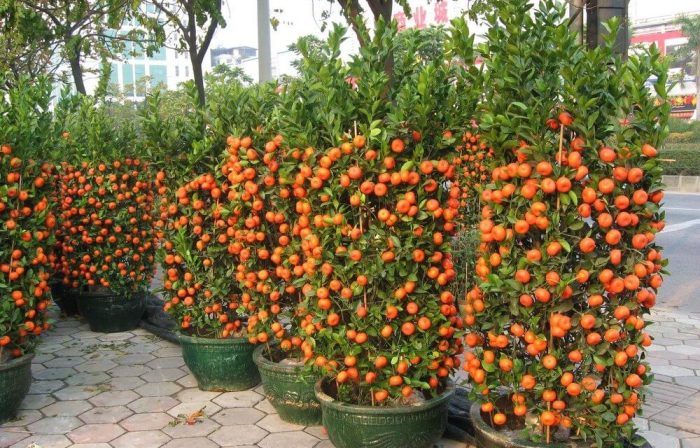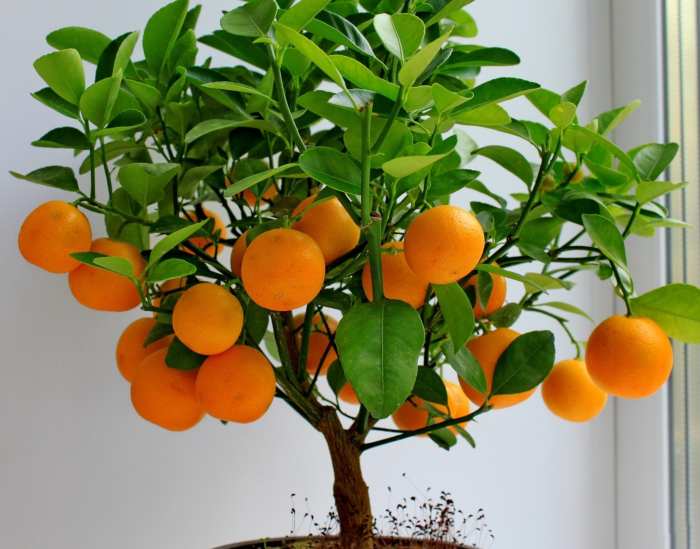Preparing for Planting

How to plant a tangerine tree – Successfully planting a tangerine tree begins with careful preparation. Understanding the ideal soil conditions, preparing the planting site appropriately, and ensuring adequate sunlight and water are crucial for the tree’s healthy growth and future fruit production. This section details the necessary steps to optimize your tangerine tree’s chances of thriving.
Ideal Soil Conditions for Tangerine Trees
Tangerine trees prefer well-drained, slightly acidic soil rich in organic matter. The optimal pH range is between 6.0 and 6. Poor drainage can lead to root rot, while insufficient nutrients will hinder growth and fruit production. The following table compares different soil types and their suitability for tangerine trees:
| Soil Type | Drainage | pH Level | Nutrient Content |
|---|---|---|---|
| Sandy Loam | Excellent | Variable, easily amended | Moderate, requires regular fertilization |
| Silty Loam | Good | Variable, easily amended | Good, but may require supplemental nutrients |
| Clay | Poor | Variable, difficult to amend | Can be high, but poor drainage limits availability |
| Sandy Soil | Excellent | Variable, easily amended | Low, requires significant fertilization |
Preparing the Planting Site, How to plant a tangerine tree
Preparing the planting site involves several key steps to ensure optimal growth conditions. These steps should be followed meticulously to create a suitable environment for your tangerine tree.
- Clear the Area: Remove any weeds, grass, rocks, or debris from the planting area. A radius of at least 3 feet around the intended planting hole is recommended for optimal root development.
- Amend the Soil: If your soil is not ideal (e.g., heavy clay or sandy soil), amend it to improve drainage and nutrient content. Incorporate organic matter such as compost or well-rotted manure. The amount will depend on the soil’s existing condition; a general guideline is to mix in 2-4 cubic feet of compost per cubic yard of soil.
- Dig the Planting Hole: Dig a hole twice as wide and as deep as the root ball of your tangerine tree. This allows for ample root expansion and prevents root circling.
Sunlight and Water Requirements
Tangerine trees need ample sunlight and regular watering to thrive. They require at least six to eight hours of direct sunlight daily. Insufficient sunlight can lead to reduced fruit production and weak growth. Watering frequency depends on several factors, including climate, soil type, and the tree’s age. Overwatering can be as detrimental as underwatering, potentially leading to root rot.
A good rule of thumb is to water deeply but infrequently, allowing the soil to dry slightly between waterings. During hot, dry periods, more frequent watering may be necessary. Observing the soil moisture level is crucial; avoid letting the soil completely dry out, especially during the tree’s establishment phase. Consider using mulch to retain soil moisture and reduce weed growth.
Planting the Tangerine Tree: How To Plant A Tangerine Tree

With your prepared hole and amended soil, it’s time to carefully plant your tangerine sapling. Gentle handling is key to ensuring its successful establishment and future growth. The process involves several crucial steps to maximize the chances of a thriving tree.Planting the sapling requires a delicate touch. Begin by carefully removing the tangerine tree from its container, gently loosening the root ball if necessary to avoid damaging the delicate roots.
So, you wanna plant a tangerine tree? First, dig a hole, twice as wide as the root ball – you don’t want a grumpy citrus! Oh, and while we’re on the subject of planting, I just read this great article on the best time to plant a magnolia tree , which is totally different from tangerines, obviously.
Back to the tangerines: make sure the tree’s snug, water it well, and prepare for tiny, delicious oranges!
Avoid pulling or tugging on the trunk. Inspect the roots; if any are circling, carefully tease them apart to encourage outward growth.
Positioning the Sapling and Backfilling
Position the sapling in the center of the prepared hole, ensuring the top of the root ball is level with the surrounding ground. This prevents the tree from settling too deeply or becoming exposed. Begin backfilling the hole with the amended soil, gently working it around the root ball to eliminate air pockets. Avoid compacting the soil too tightly, as this can restrict root growth.
Fill the hole gradually, ensuring the soil is evenly distributed. A slightly mounded soil surface around the base of the tree helps retain water.
Providing Support with Stakes
Using stakes to support young tangerine trees is highly recommended, especially in windy areas. This helps prevent the delicate sapling from being damaged or blown over. Two stakes, approximately 1-2 inches in diameter and slightly taller than the sapling, are ideal. Drive them into the ground approximately 6 inches away from the tree’s trunk, ensuring they are firmly in place.
Use soft, flexible tree ties, such as cloth or rubber, to gently secure the sapling to the stakes. Avoid using wire or other materials that can cut or damage the bark. The ties should be loose enough to allow for growth but firm enough to provide support.
Imagine a diagram: The sapling is at the center. Two stakes are positioned on opposite sides, slightly angled away from the tree trunk. Soft tree ties are loosely looped around the sapling and tied to each stake, creating an “X” shape to provide stable support. The ties should not be too tight to constrict the tree’s growth.
Watering the Newly Planted Tree
Proper watering is crucial for the establishment of your tangerine tree. Immediately after planting, thoroughly water the tree to settle the soil and help the roots establish contact with the surrounding soil. Avoid overwatering, which can lead to root rot. Water deeply and less frequently, allowing the soil to dry slightly between waterings. The frequency of watering will depend on factors such as climate, soil type, and weather conditions.
During hot and dry periods, increase the frequency of watering. During periods of rain, reduce or eliminate supplemental watering. Observe the soil moisture regularly; if the top few inches feel dry, it’s time to water again. A consistent moisture level, without waterlogging, is the key to healthy growth.
Harvesting Tangerines

Harvesting your tangerines at the optimal time ensures the sweetest and most flavorful fruit. Knowing the signs of ripeness and employing the correct harvesting techniques will protect both your tree and your yield. Proper storage will then extend the enjoyment of your homegrown citrus.Tangerine ripeness is determined by a combination of visual and tactile cues. The color will be a key indicator, although the exact shade varies depending on the cultivar.
Generally, look for a deep orange hue, often with a slight blush of reddish-orange. Avoid picking tangerines that are still predominantly green, as these will be tart and under-ripe. A ripe tangerine will also feel firm to the touch, but not hard. Avoid those that are overly soft or show signs of blemishes or decay. Gently squeezing the fruit will give you a sense of its ripeness; a slightly yielding feel indicates readiness.
Tangerine Harvesting Techniques
Harvesting tangerines requires a gentle approach to prevent damage to both the fruit and the tree. Use hand-held clippers or pruning shears to carefully cut the stem just above the fruit. Avoid pulling or twisting the tangerine from the branch, as this can injure the tree and leave behind a ragged wound, increasing the risk of disease. Harvesting should be done in dry weather to minimize the risk of fungal infections.
After picking, inspect each tangerine for any damage and gently clean them.
Storing Harvested Tangerines
Proper storage significantly extends the shelf life of harvested tangerines and preserves their quality. Tangerines are best stored at cool temperatures, ideally between 34°F and 38°F (1°C and 3°C). A refrigerator’s crisper drawer is an excellent location. Avoid storing tangerines near ethylene-producing fruits and vegetables, such as apples and bananas, as ethylene accelerates ripening and can lead to spoilage.
If storing at room temperature, place the tangerines in a single layer to prevent bruising. For longer-term storage, consider freezing the tangerines after peeling and segmenting them. This preserves their flavor and nutritional value. Frozen tangerine segments can be used in smoothies, juices, or other culinary creations.
FAQ Overview
Can I grow a tangerine tree from seed?
Yes, but it’s less reliable. Seed-grown trees may not produce fruit true to the parent tree, and it takes longer to bear fruit. Grafted trees are generally preferred for quicker results and consistent fruit quality.
How often should I fertilize my tangerine tree?
A regular fertilization schedule is crucial. Consult a local nursery or agricultural extension office for specific recommendations based on your region and soil conditions. A general guideline is to fertilize monthly during the growing season.
What should I do if my tangerine tree leaves are yellowing?
Yellowing leaves often indicate nutrient deficiencies (especially iron or zinc) or overwatering. Check your soil drainage and consider a soil test to determine the cause and adjust your care accordingly.
My tangerine tree is attracting pests. What can I do?
Common pests include aphids, scale, and spider mites. Start with insecticidal soap or neem oil for mild infestations. For severe infestations, consult a local nursery for appropriate pesticide recommendations.
